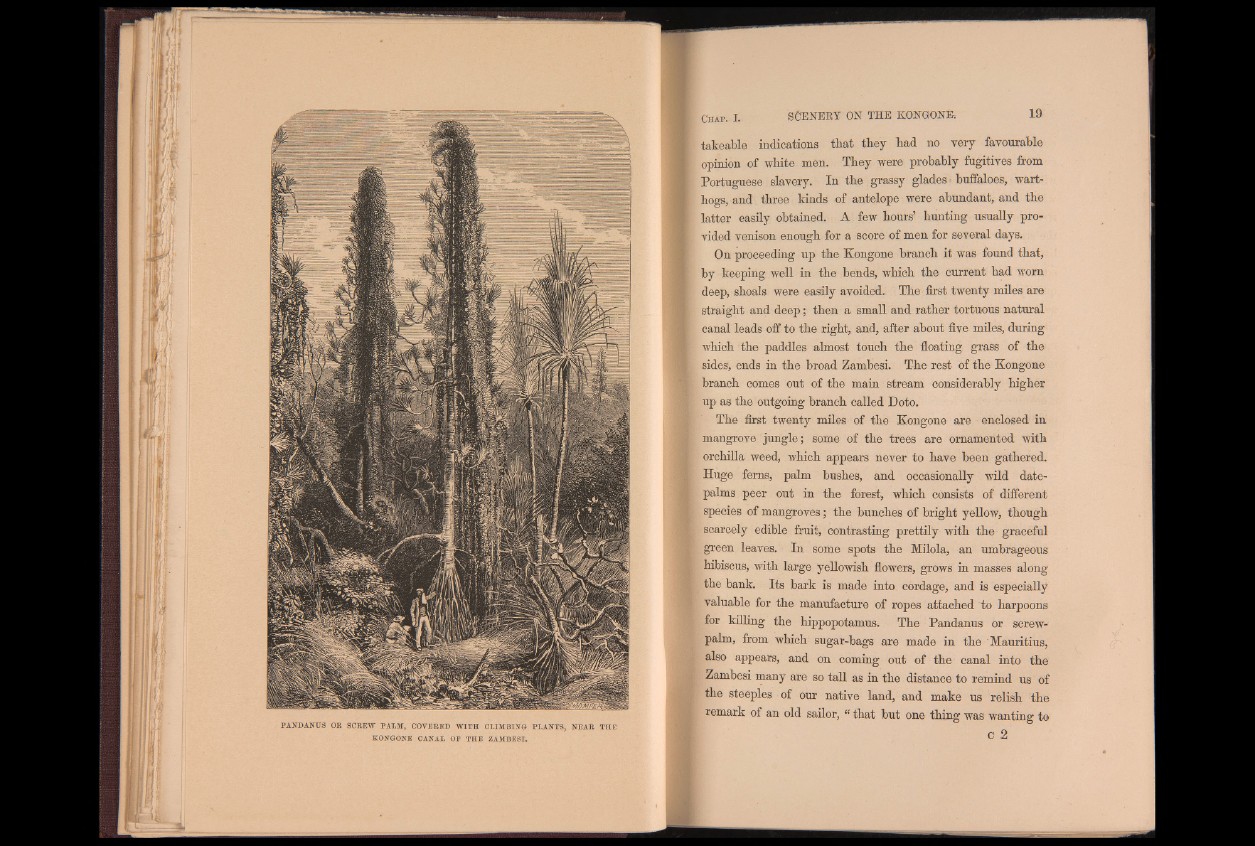
P AND ANUS OR SCREW PALM, COVERED W ITH CLIMBING PLANTS, NEAR THE
KONGONE CANAL OF THE ZAMBESI.
takeable indications that they had no very favourable
opinion of white men. They were probably fugitives from
Portuguese slavery. In the grassy glades I buffaloes, wart-
hogs, and three kinds of antelope were abundant, and the
latter easily obtained. A few hours’ hunting usually provided
venison enough for a score of men for several days.
On proceeding up the Kongone branch it was found that,
by keeping well in the bends, which the current had worn
deep, shoals were easily avoided. The first twenty miles are
straight and deep; then a small and rather tortuous natural
canal leads off to the right, and, after about five miles, during
which the paddles almost touch the floating grass of the
sides, ends in the broad Zambesi. The rest of the Kongone
branch comes out of the main stream considerably higher
up as the outgoing branch called Doto.
The first twenty miles of the Kongone are enclosed in
mangrove jungle; some of the trees are ornamented with
orchilla weed, which appears never to have been gathered.
Huge ferns, palm bushes, and occasionally wild date-
palms peer out in the forest, which consists of different
species of mangroves; the bunches of bright yellow, though
scarcely edible fruit, contrasting prettily with the graceful
green leaves. In some spots the Milola, an umbrageous
hibiscus, with large yellowish flowers, grows in masses along
the bank. Its bark is made into cordage, and is especially
valuable for the manufacture of ropes attached to harpoons
for killing the hippopotamus. The Pandanus or screw-
palm, from which sugar-bags are made in the Mauritius,
also appears, and on coming out of the canal into the
Zambesi many are so tall as in the distance to remind us of
the steeples of our native land, and make us relish the
remark of an old sailor, “ that but one thing was wanting to
c 2